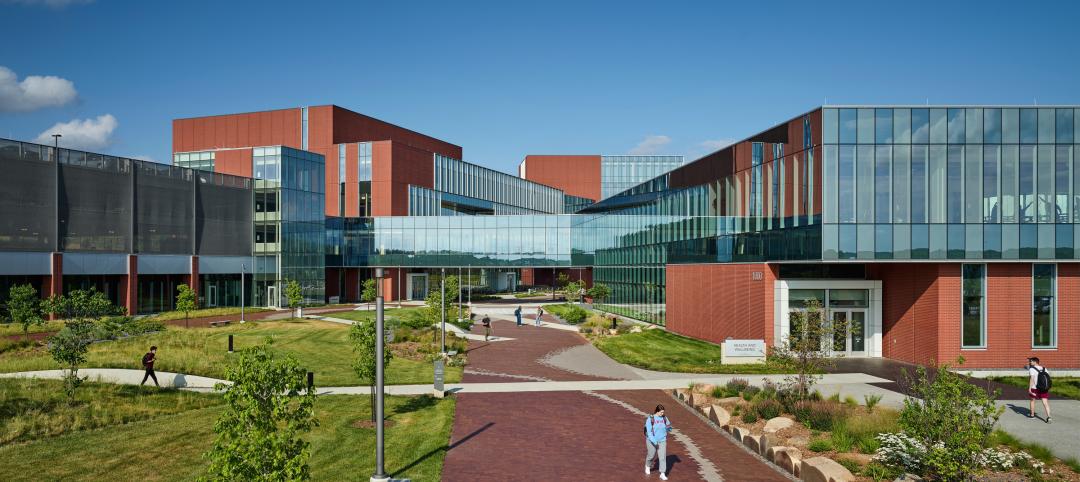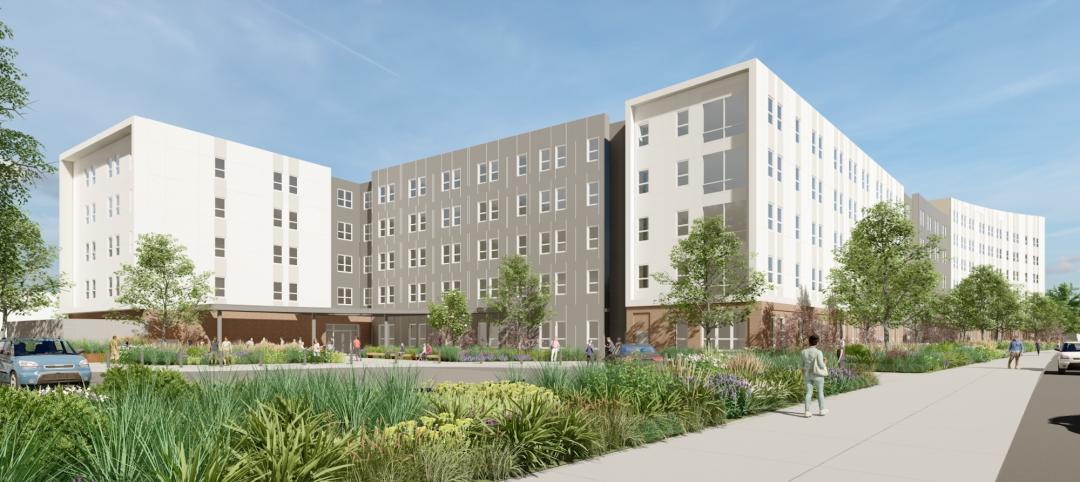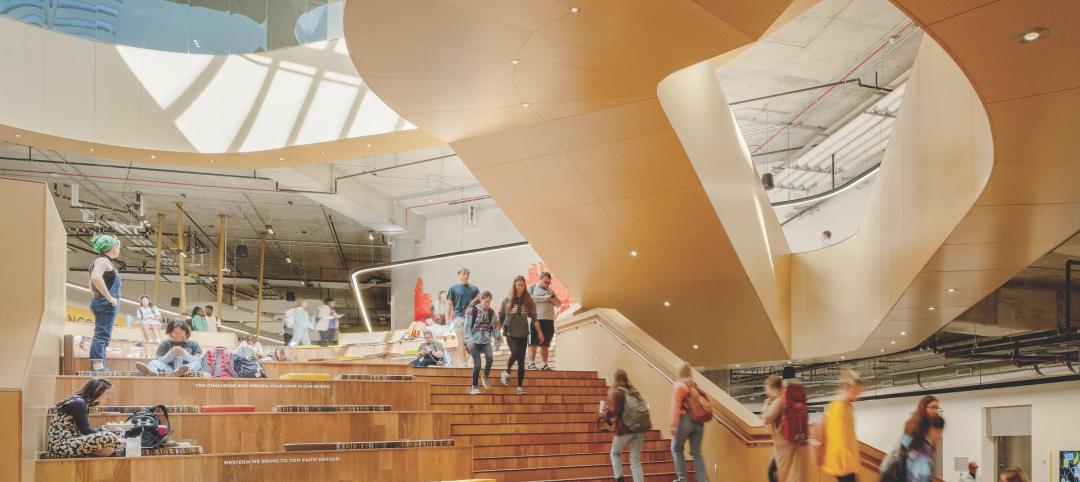To the unndoctrinated, the construction industry conjures images of hard hats and ditch digging. In my years of experience speaking with teachers, students, and up-and-coming generations of workers, time and time again they are surprised to learn that a career in construction can be so much broader and more fulfilling than the stereotypes associated with the trade.
While the industry has made great strides to move beyond a stereotypical view of careers in construction, there is still work to be done to attract, and more importantly, retain, talented workers. Younger generations aren’t just interested in a job, they are seeking career opportunities. They desire to grow, engage meaningfully in their work, and be passionate about what they’re doing. They also want to have a say and be heard.
Flipping Construction Mentoring on Its Head
There’s a unique opportunity for the construction industry to leverage reverse mentorship to retain workers and prepare them for leadership roles while challenging the thoughts and actions of current leaders to improve the culture and operations now and in the future.
Everyone’s familiar with mentorship, where a more senior-level staffer imparts his or her years of wisdom, experience, and council to a younger colleague. Reverse mentorship recognizes that the younger generation has something to offer, too. The added benefit of reverse mentorship is helping seasoned professionals develop new skills, stay connected with younger generations, and gain future-forward insights for life and business.
Relationships between senior and young professionals can be an eye opener for both parties with some crucial benefits supporting today’s business challenges.
Expanding awareness of operations and opportunities. We’ve all heard the saying ‘you don’t know what you don’t know.’ All too often, there’s an information gap between junior and senior staffers, with the junior staff only getting a limited view of the business or projects and senior staffers not fully understanding the breadth of talent on the bench.
Reverse mentoring relationships help connect the dots between junior staffer’s skills and interests and opportunities that they may not have even realized existed in construction. When they know about the possibilities, they can begin to take control and be purposeful in driving their career toward the achievement of a specific goal.
Taking the time to learn more about what young team members are capable of and have interest in, allows senior leaders to identify areas of interest and tailor learning opportunities accordingly. Exposing junior staffers to more prepares them to tap into, and eventually step into, a host of roles. This can be an important part of succession planning.
Room for Diverse Perspectives. Reverse mentoring creates space for diverse perspectives to be heard. Women are the most underrepresented members of the construction workforce. And attracting more women to the construction industry has been a long-standing struggle. The intimate nature of a mentoring relationship makes it possible to dig a little deeper to draw out fresh perspectives and help minority members of the company feel valued and heard.
Creating new pathways to problem solving. As more diverse workers come into the construction industry, with them comes new and valuable perspectives and ways of thinking. It’s crucial to draw those perspectives out and give them space to grow.
Reverse mentoring exposes senior professionals to fresh thinking about the future. Inevitably, we enter ruts and get stuck. We do what we know and what’s comfortable rather than challenge assumptions. Companies that want to improve will seek input from fresh sources: young, old, male, female. No idea is a bad one. Make every meeting and conference room a safe place to elevate new thinking.
This way of approaching problems has served Compass Datacenters well, resulting in major changes that were hard to implement at the outset but serve customers well in the long run.
Advice for implementing reverse mentorship in construction
Start Small. One of the biggest pieces of advice for mentoring of any kind is to know your limits and don’t overcommit. Each season will have a different set of priorities and time restrictions. Be realistic about your schedule and how much time you have available to dedicate to your new relationship. If you don’t have the capacity to commit to attending evening seminars or professional events, consider an in-person lunch or coffee that aligns with your work schedule.
Find the right match for you. It’s important to connect with someone who shares your professional passions; these could be hard or soft skills. Finding the right match for reverse mentorship is all about growing a relationship with someone you respect and connect with. The best mentorship relationships aren’t necessarily between those within the same segment of the industry either. Learning about other areas helps both parties better understand the bigger picture and how each area is connected.
Be authentic and ready to learn. The most important component of reverse mentorship is the relationship itself. In a recent Breaking Glass podcast (a production of Compass Datacenters), I spoke with a colleague about the importance of building your personal board of directors—a group of professionals you can turn to for advice and counsel. In many ways, reverse mentorship is an opportunity to build your board and get well rounded input from colleagues.
The construction industry benefits from relationships and communication. What makes reverse mentorship truly successful is 1) a willingness to be authentic, 2) the act of sharing why you love what you do, and 3) staying interested in hearing other people’s stories.
As the industry continues to grow, it’s critical to prioritize relationships and continuous learning. The best way to prepare for the future of the construction industry is to build relationships with and learn from the next generation.
ABOUT THE AUTHORS
With more than 30 years of experience in the construction industry, Nancy Novak brings extensive expertise in oversight and responsibility for Profit and Loss. In her current role as Chief Innovation Officer for Compass Datacenters, her focus is cutting edge technology, lean practices, and innovative culture through diversity of thought to add value, improve return on investment, and disrupt the construction industry. Nancy serves on the Board of Directors for Weston Solutions, a global environmental firm. She is heavily involved in organizations that lead the way for technological advancement in the construction industry, and she is an advocate for women’s leadership. Nancy currently serves as the Board of Director Vice Chair on the National Institute of Building Sciences BIM Council, as well as Executive Sponsor for the Digital Divide on the iMasons Advisory Board. She is also the host of the “Breaking Glass” podcast, which features Nancy’s dynamic conversations with prominent women in the technology industry—a forum where these accomplished women offer insights, advice and inspiration that listeners can apply to their own professional lives.
Tiffany English is Senior Director, Architecture for Qualcomm Incorporated. Qualcomm is the world’s leading technology innovator. With Real Estate Assets over 12 Million square feet in 30 countries and 40,000+ employees globally. Qualcomm’s breakthroughs in 5G are making the world more connected while making an impact on society and world’s biggest challenges. Tiffany’s role at Qualcomm is oversight of the companies architectural, interior design, space planning, facilities planning, lab planning and MEP engineering teams globally. Tiffany has more than 24 years of industry experience and has overseen, designed, and managed over 7 million square feet of projects for commercial real estate and Fortune 500 clients. Tiffany is currently serving as Immediate Past President of CREW Network, 2021. CREW Network represents 75+ markets and over 12,000 members globally. CREW Network continues to transform the commercial real estate industry by advancing women globally.
Related Stories
Sustainable Design and Construction | Oct 10, 2024
Northglenn, a Denver suburb, opens a net zero, all-electric city hall with a mass timber structure
Northglenn, Colo., a Denver suburb, has opened the new Northglenn City Hall—a net zero, fully electric building with a mass timber structure. The 32,600-sf, $33.7 million building houses 60 city staffers. Designed by Anderson Mason Dale Architects, Northglenn City Hall is set to become the first municipal building in Colorado, and one of the first in the country, to achieve the Core certification: a green building rating system overseen by the International Living Future Institute.
Contractors | Oct 10, 2024
How to get your construction team engaged and on board with new processes
Discover practical strategies to boost employee engagement and create a collaborative environment where your team feels valued and motivated to contribute to your company’s vision.
3D Printing | Oct 9, 2024
3D-printed construction milestones take shape in Tennessee and Texas
Two notable 3D-printed projects mark milestones in the new construction technique of “printing” structures with specialized concrete. In Athens, Tennessee, Walmart hired Alquist 3D to build a 20-foot-high store expansion, one of the largest freestanding 3D-printed commercial concrete structures in the U.S. In Marfa, Texas, the world’s first 3D-printed hotel is under construction at an existing hotel and campground site.
University Buildings | Oct 9, 2024
Des Moines University Medicine and Health Sciences opens a new 88-acre campus
Des Moines University Medicine and Health Sciences has opened a new campus spanning 88 acres, over three times larger than its previous location. Designed by RDG Planning & Design and built by Turner Construction, the $260 million campus features technology-rich, flexible educational spaces that promote innovative teaching methods, expand research activity, and enhance clinical services. The campus includes four buildings connected with elevated pathways and totaling 382,000 sf.
Student Housing | Oct 9, 2024
University of Maryland begins work on $148 million graduate student housing development
The University of Maryland, in partnership with Campus Apartments and Mosaic Development Partners, has broken ground on a $148.75 million graduate student housing project on the university’s flagship College Park campus. The project will add 741 beds in 465 fully furnished apartments.
AEC Tech Innovation | Oct 8, 2024
New ABC technology report examines how AI can enhance efficiency, innovation
The latest annual technology report from Associated Builders and Contractors delves into how artificial intelligence can enhance efficiency and innovation in the construction sector. The report includes a resource guide, a case study, insight papers, and an essay concerning applied uses for AI planning, development, and execution.
Healthcare Facilities | Oct 8, 2024
Herzog & de Meuron completes Switzerland’s largest children’s hospital
The new University Children’s Hospital Zurich features 114 rooftop patient rooms designed like wooden cottages with their own roofs. The project also includes a research and teaching facility.
Mixed-Use | Oct 7, 2024
New mixed-use tower by Studio Gang completes first phase of San Francisco waterfront redevelopment
Construction was recently completed on Verde, a new mixed-use tower along the San Francisco waterfront, marking the end of the first phase of the Mission Rock development. Verde is the fourth and final building of phase one of the 28-acre project that will be constructed in several phases guided by design principles developed by a design cohort led by Studio Gang.
Brick and Masonry | Oct 7, 2024
A journey through masonry reclad litigation
This blog post by Walter P Moore's Mallory Buckley, RRO, PE, BECxP + CxA+BE, and Bob Hancock, MBA, JD, of Munsch Hardt Kopf & Harr PC, explains the importance of documentation, correspondence between parties, and supporting the claims for a Plaintiff-party, while facilitating continuous use of the facility, on construction litigation projects.
University Buildings | Oct 4, 2024
Renovations are raising higher education campuses to modern standards
AEC higher ed Giants report working on a variety of building types, from performing arts centers and libraries to business schools. Hybrid learning is seemingly here to stay. And where possible, these projects address wellness and mental health concerns.

















